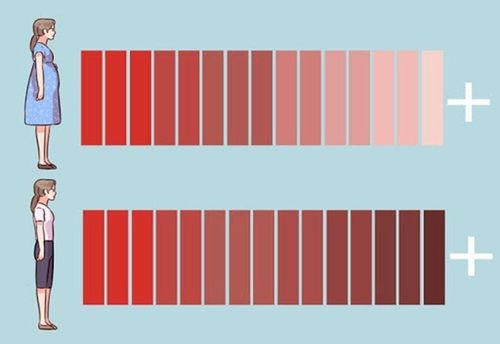This is an automatically translated article.
The article is professionally consulted by Specialist Doctor I Nguyen Thi Man - Department of Obstetrics and Gynecology - Vinmec International Hospital Da Nang.
Normal discharge will last about 20 days, in some cases it can be up to 40-45 days, but with a marked decrease in volume, it changes from dark red to light brown, light yellow to clear, especially no bad smell.
1. What is normal postpartum discharge?
Normal discharge appears about 2-3 days after birth. The average duration of prolapse is about 20 days, a few cases have been recorded for nearly 45 days. Women who give birth by cesarean or vaginal birth have to deal with discharge.The discharge has a change in state according to each stage:
In the first stage, about 4 days after birth, the discharge is red due to the necrosis of the uterine lining and gradually removed. The next stage, around the 9th day, the discharge is pink in color and has a thick consistency. At this time the discharge consists of blood and mucus, but the amount of blood is very small. This mucus is a waste product from the lining of the uterus that is removed. After the 10th day, the postpartum discharge is brown, at this time the mother will see the appearance of blood clots, but do not be too worried, this is a sign of a fairly good recovery of the uterus. After this time, the discharge will be less, white, women can rest assured because it won't be long before the discharge will be completely gone. The product turns white because it contains epidermal cells, white blood cells, and other necrotic cells. White discharge can vary depending on the location, some pregnant women have milky white discharge, others have a yellowish white color. Normal discharge will not have an unpleasant odor and will lessen over time.
2. What is abnormal discharge?
Postpartum discharge has a bad smell, pregnant women need to go to the doctor immediately, if there is a lot of fluid, there is a clot in the vagina, there is foam or blood, the doctor will prescribe appropriate intervention to avoid infection. increase. Bleeding was so profuse that tampons had to be changed within an hour.
3. Handling postpartum discharge to prevent infection
This fairly long period of time requires the mother to know how to take care of the private area properly to keep the body clean and prevent fungal infections that can affect health. Here are a few things to keep in mind to avoid abnormal discharge with an odor and infection:Change tampons every 1-2 hours in the first few days after giving birth. When the blood is less and gradually diluted, the time of using tampons can be extended to 3-4 hours/time. Note that it should not be left for more than 4 hours because it will increase the risk of infection even higher. Changing tampons regularly is one of the best ways to keep the intimate area clean and odor-free. For mothers who give birth vaginally, extra care should be taken about the perineal stitches, which will help avoid infection as well as infection. Immediately after giving birth, you should bathe regularly without abstaining (at least once a day). Frequent urination will help empty the bladder, reduce resistance to uterine contractions, and always wash your hands before and after changing tampons and using the toilet.
4. After the discharge, how long does it take to have a period?
After giving birth, there is no discharge, ie about 4-6 weeks after giving birth, if a woman gives birth to see fresh blood, it is a preterm period after giving birth, this phenomenon is similar to a woman's menstrual period and lasts for a long time. From 3 to 5 days, the discharge is bright red, mucus, not accompanied by fever or abdominal pain. However, the time it takes to start menstruating again after giving birth for each woman depends on factors such as breastfeeding, hormone levels, and lifestyle.
If you have sex during these first 6 weeks, the chance of pregnancy is almost zero, but if you have sex after 6 weeks without protection, the chances of pregnancy will be higher.
Taking birth control pills without consulting a doctor is not a safe option because hormone pills can affect the quality and quantity of milk. Be sure not to take pills that have a combination of estrogen and progesterone and use only progesterone pills as they won't affect milk.
Please dial HOTLINE for more information or register for an appointment HERE. Download MyVinmec app to make appointments faster and to manage your bookings easily.














